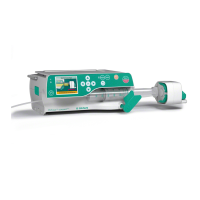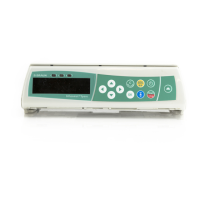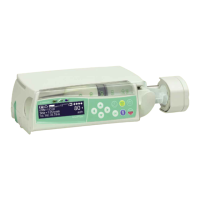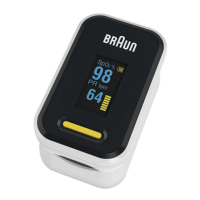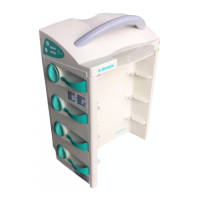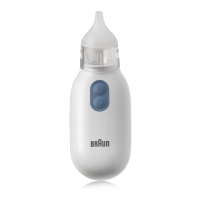12
Safety instructions
Q
When administering highly-eective
drugs, have a second device ready for
the drug.
Q
Avoid mechanical eects on the
device. Ifthe device is moved while in
operation, the set delivery rate may be
exceeded/not be reached.
Q
Monitor the administration of highly-
eective drugs accordingly.
Q
Irrespective of the soft limits, ensure
that the values set for the patients are
the medically correct values.
Q
When using the device near equipment
that can cause higher interference
emissions (e.g. electrosurgical devices,
magnetic resonance imaging units,
mobile telephones) keep the device
the recommended safe distance away
from such equipment.
4.1.7
Alarms and sta call
Q
The volume of the device‘s acoustic
alarms can be adjusted for the envi-
ronmental conditions. This ensures
that the alarms are clearly audible.
Q
Always monitor the pump alarms.
Theuse of data communication via
an accessory cable or sta call does
not adequately replace monitoring
thealarms.
Q
Check the sta call before each use
ofthe device.
4.1.6
Control
Q
Stand in front of the device to operate
it. This ensures that you are able to
reach all control elements and that the
display is clearly visible.
Q
Only connect the patient once the
syringe has been positioned correctly
and the syringe plunger plate is being
correctly held by the drive head claws.
Ensure adequate protection against
free-ow when changing syringes
in order to avoid an unwanted dose
administration.
Q
Ensure that the syringe plunger plate
sits ush with the drive head syringe
plate sensor.
Q
Only use approved syringes/catheters
for their intended medical use.
Q
Position the infusion line to the
patient so that it does not have any
kinks.
Q
Ensure that installation in rooms
used for medical purposes is done in
accordance with the regulations (e.g.,
VDE 0100, VDE 0107 and/or IEC speci-
cations). Observe all country-specic
regulations and national deviations.
Q
Do not operate the device near inam-
mable anaesthetics.
Q
Always check the plausibility of the
values shown on the display.
Q
Ensure that there is additional patient
supervision (e.g. monitoring) if life
sustaining drugs are administered.
Q
Do not apply any force to the drive
head during delivery as this could
trigger an alarm.
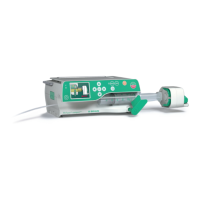
